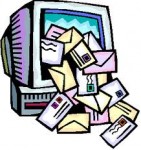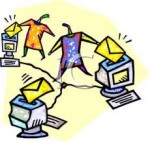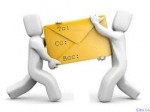#1 Reason for Communication Challenges in a Pharmacy
 The #1 communication method that causes misunderstandings in pharmacies is….
The #1 communication method that causes misunderstandings in pharmacies is….
You voted & the results are in from last month’s poll of pharmacy residency directors and pharmacy managers. The most popular answer was email. Face-to-face communication is currently in 2nd place. Do you agree?
What method of communication has caused you the most misunderstandings? If you haven’t voted yet, vote here & see the latest tally so your input is counted.
Tired of emails causing you frustrations with miscommunication? Here are 7 ways to prevent this issue from happening, including when & when not to use email.
1. Write a summary of the content or the request you have in the subject of the email. I started doing this regularly when my straightforward best friend from pharmacy school (she’s a clinical inpatient pharmacist & is now working at the FDA) asked me to start being specific in every subject title of emails to her, even personal ones. I suppose she had a lot of emails to go through at the time & now I understand the value of it even more, now that I get hundreds of emails every day.
- Bonus Tip: Put the level of importance of your task request in the subject heading of the email, example: IMPORTANT: Send me XXX today
2. End the first paragraph of each email with an overview of the rest of the email, or an action step request (with deadline). End the last paragraph with a summary of how to move forward, by when, and how.
 3. Request confirmation and understanding of your email. This is important when you are wanting someone to do something for you, or you want to make sure someone understood you clearly. Sometimes confirmation of understanding your email is best to do on the phone, rather than back & forth questions that may develop as a result of questions about your email.
3. Request confirmation and understanding of your email. This is important when you are wanting someone to do something for you, or you want to make sure someone understood you clearly. Sometimes confirmation of understanding your email is best to do on the phone, rather than back & forth questions that may develop as a result of questions about your email.
4. Don’t be afraid of the phone. Let’s face it. We’ve all done it—trying to avoid an uncomfortable conversation or the elephant in the room by emailing someone. And then it just gets worse, because your email gets interpreted differently than you intended. Then the receiver takes time fuming over your email, crafting just the perfect thing to say in response. All that energy wasted and leading to both of you feeling frustrated than if you just both got on the phone. Imagine that! Some things are better to talk about in person, including new items that might require discussion. Get on the phone.
5. The best times to use email to communication are when you want to share updates (preferably in bullet points) or make quick announcements that you may wish to have forwarded. Email is also useful for notating policy changes and summarizing mutual understanding about a conversation you’ve had with someone and how to move forward. If you are initiating a policy change, have the receiver verbalize their understanding of what you’d like them to do on the phone.
6. Find out the preference of the people you work with closely—do they prefer one long email with many points, or a separate email for each task/topic? Of course, you can’t cater to everyone, but short typically better for everyone’s busy lives.
7.  Is CC or BCC better?
Is CC or BCC better?
- Use Cc (or carbon copy) field for people you want to know about the message, but are not directly involved. It’s for people that do not need to act or reply to the message, but to keep them informed. But they can if they want to.
- Mention in the email that you are CCing someone on an email
- The Bcc field (Blind Carbon Copy) can be used when you want other people to receive the message, but you don’t want the other recipients to know they got it.
- The benefit of using BCC instead of CC is that if a person hits “reply all” it won’t go to everyone



